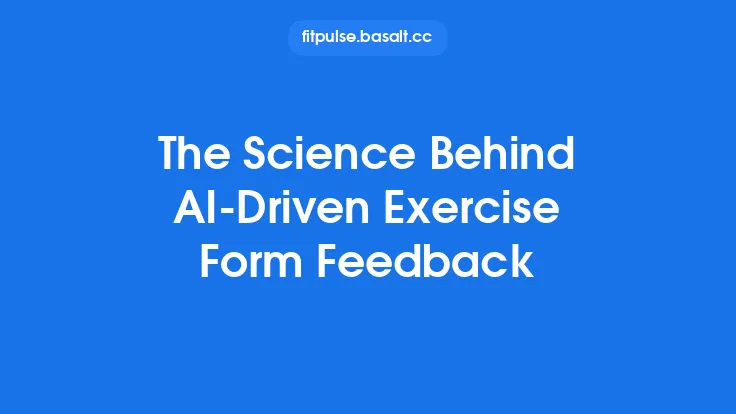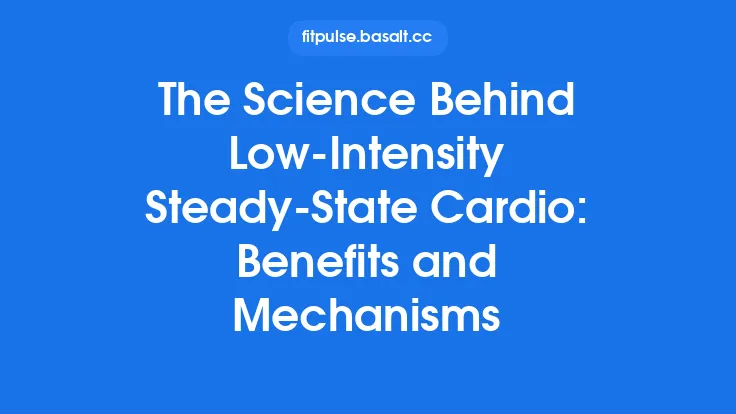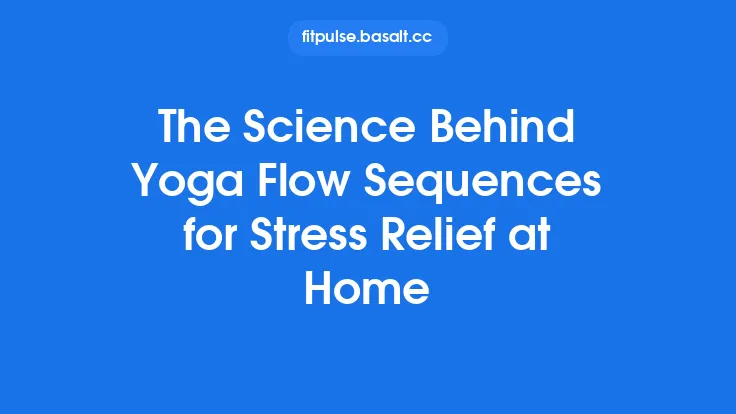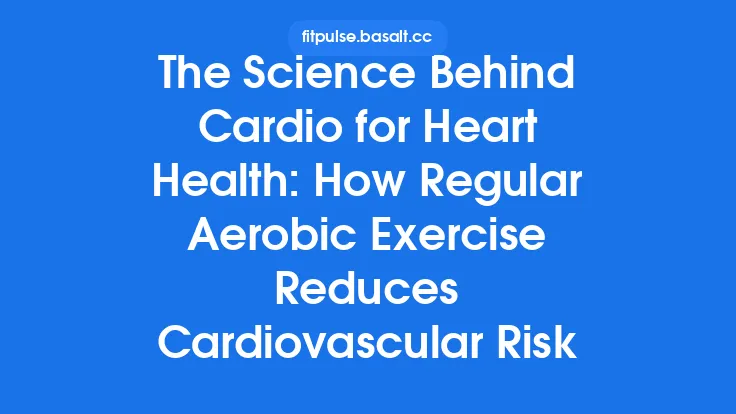Exercise has a unique capacity to lift our spirits almost instantly, yet the underlying biology is far from simple. When you finish a brisk walk, a vigorous spin class, or a short bout of resistance training, you may notice a surge of optimism, a reduction in mental fatigue, or a feeling of “lightness.” These subjective experiences are rooted in a cascade of physiological events that begin the moment muscles contract and extend far beyond the gym walls, influencing brain chemistry, neural circuitry, and even gene expression. Understanding the science behind exercise‑induced mood enhancement not only satisfies curiosity but also informs the design of training protocols that maximize psychological well‑being while minimizing the risk of overtraining or adverse effects.
Neurotransmitter Release: The Classic “Feel‑Good” Molecules
Endorphins and Opioid Peptides
During moderate‑to‑high intensity exercise, the hypothalamus and pituitary gland stimulate the release of β‑endorphin, an endogenous opioid peptide. β‑endorphin binds to μ‑opioid receptors in the brain, particularly within the limbic system, dampening pain perception and producing a euphoric state often described as a “runner’s high.” While the magnitude of endorphin release correlates with exercise intensity, individual variability is high, influenced by genetics (e.g., OPRM1 polymorphisms) and training status.
Endocannabinoids
Parallel to the opioid system, aerobic activity elevates circulating levels of anandamide (AEA) and 2‑arachidonoylglycerol (2‑AG). These endocannabinoids cross the blood‑brain barrier and activate CB1 receptors, especially in the prefrontal cortex and hippocampus. Activation of CB1 modulates reward pathways and reduces anxiety, contributing to the subjective sense of calm and pleasure after exercise. Notably, endocannabinoid responses are more pronounced after prolonged, steady‑state activities (e.g., 30‑45 min of jogging) than after brief, high‑intensity intervals.
Monoamines: Dopamine, Serotonin, and Norepinephrine
Exercise stimulates the synthesis and release of dopamine, serotonin, and norepinephrine through several mechanisms:
- Tyrosine Hydroxylase Activation – Physical activity up‑regulates the enzyme responsible for dopamine synthesis, enhancing dopaminergic transmission in the mesolimbic pathway, which underlies reward and motivation.
- Tryptophan Availability – Muscle contraction increases plasma free tryptophan, the precursor to serotonin, facilitating its transport across the blood‑brain barrier.
- Locus Coeruleus Activation – Norepinephrine release from the locus coeruleus is heightened during exercise, sharpening attention and arousal, which can be perceived as an uplifted mood.
Collectively, these monoamines improve affective states, increase alertness, and reduce the perception of mental fatigue.
Neurotrophic Factors and Brain Plasticity
Brain‑Derived Neurotrophic Factor (BDNF)
One of the most robust findings in exercise neuroscience is the acute rise in circulating BDNF following aerobic activity. BDNF crosses the blood‑brain barrier and binds to TrkB receptors, promoting synaptic plasticity, dendritic growth, and neurogenesis—particularly in the hippocampus. Enhanced hippocampal function is linked to improved mood regulation, as this region modulates the hypothalamic‑pituitary‑adrenal (HPA) axis and emotional memory processing.
Insulin‑Like Growth Factor‑1 (IGF‑1) and Vascular Endothelial Growth Factor (VEGF)
Both IGF‑1 and VEGF increase after moderate‑intensity exercise and synergize with BDNF to support angiogenesis and neuronal survival. IGF‑1, in particular, can cross the blood‑brain barrier and directly stimulate neurogenesis, contributing to long‑term mood stability.
Hormonal Modulation and the HPA Axis
Exercise imposes a physiological stress that activates the HPA axis, leading to cortisol release. While chronic hypercortisolemia is associated with mood disorders, acute, transient spikes in cortisol during exercise appear to have a hormetic effect—priming the brain’s stress‑response systems to become more resilient. Post‑exercise, cortisol levels typically fall below baseline, a phenomenon termed “cortisol rebound,” which is associated with reduced perceived stress and improved affect.
Inflammatory Cytokines: From Pro‑ to Anti‑Inflammatory Shifts
Physical activity induces a brief surge in pro‑inflammatory cytokines (e.g., IL‑6, TNF‑α) during muscle contraction. However, this is swiftly followed by an anti‑inflammatory response characterized by increased interleukin‑10 (IL‑10) and soluble TNF receptors. The net effect is a reduction in systemic low‑grade inflammation—a known contributor to depressive and dysphoric states. Moreover, IL‑6 released from contracting muscle (myokine) can cross the blood‑brain barrier and directly influence central neurotransmission, promoting mood elevation.
Acute vs. Chronic Adaptations
| Aspect | Acute (single bout) | Chronic (≥4 weeks) |
|---|---|---|
| Neurotransmitters | Immediate surge of endorphins, endocannabinoids, monoamines | Baseline up‑regulation of synthesis pathways, enhanced receptor sensitivity |
| BDNF | Transient increase (peaks ~15 min post‑exercise) | Elevated resting levels, improved hippocampal volume |
| Hormones | Short‑term cortisol spike, post‑exercise decline | Attenuated cortisol response to stressors, improved diurnal rhythm |
| Inflammation | Brief pro‑inflammatory phase → anti‑inflammatory rebound | Lower basal inflammatory markers (CRP, IL‑6) |
| Mood outcome | Immediate uplift, reduced mental fatigue | Sustained higher positive affect, lower trait anxiety |
Understanding the temporal dynamics helps practitioners prescribe exercise that yields both immediate mood boosts and long‑term emotional resilience.
Dose–Response Relationships
Intensity
- Low‑Intensity (≤40 % VO₂max): Modest endorphin release; primarily beneficial for beginners or those with low exercise tolerance.
- Moderate‑Intensity (40‑70 % VO₂max): Optimal for endocannabinoid and BDNF responses; associated with the greatest subjective mood improvement in most studies.
- High‑Intensity Interval Training (HIIT): Produces rapid spikes in catecholamines and endorphins; may yield a pronounced “post‑exercise euphoria” but also carries a higher risk of overtraining‑related mood disturbances if not periodized.
Duration
- Short Bouts (≤20 min): Sufficient to trigger endorphin and endocannabinoid release; mood benefits are often short‑lived.
- Medium Bouts (20‑45 min): Consistently elevate BDNF and anti‑inflammatory cytokines; mood enhancement tends to persist for several hours.
- Long Bouts (≥60 min): May lead to diminishing returns on acute mood due to fatigue; however, chronic adaptations (e.g., increased hippocampal volume) are amplified.
Frequency
Three to five sessions per week of moderate‑intensity aerobic activity appear to balance acute mood lifts with chronic neuroplastic benefits while minimizing the risk of overreaching.
Modality Specificity
| Modality | Primary Neurochemical Signature | Mood Effect Profile |
|---|---|---|
| Aerobic (running, cycling, swimming) | Endorphins, endocannabinoids, BDNF, IL‑6 (myokine) | Broad uplift, increased vigor, reduced mental fatigue |
| Resistance Training | Acute testosterone surge, IGF‑1, catecholamines | Boost in confidence, sense of mastery, moderate euphoria |
| Mind‑Body (yoga, tai chi) | GABAergic activity, reduced cortisol, increased serotonin | Calm, contentment, reduced rumination |
| Combined (concurrent training) | Synergistic BDNF and endorphin responses | Composite of vigor and calm, enhanced overall affect |
While aerobic exercise dominates the literature on mood enhancement, resistance and mind‑body practices contribute distinct affective benefits that can complement aerobic sessions in a balanced program.
Individual Differences: Genetics, Sex, and Age
- Genetic Polymorphisms – Variants in the BDNF Val66Met gene influence activity‑dependent BDNF release; Met carriers often report smaller mood improvements after identical exercise bouts. Similarly, COMT Val158Met affects dopamine metabolism, modulating reward perception during exercise.
- Sex Hormones – Estrogen up‑regulates serotonergic receptors and BDNF expression, potentially amplifying mood benefits in pre‑menopausal women. Conversely, testosterone’s influence on mood appears mediated through confidence and perceived competence during resistance training.
- Age – Older adults exhibit blunted catecholamine responses but retain robust BDNF up‑regulation with moderate aerobic activity, supporting mood enhancement even in later life stages.
Measuring Mood Changes: Methodological Considerations
Researchers employ validated psychometric tools to capture the nuanced affective shifts induced by exercise:
- Positive and Negative Affect Schedule (PANAS) – Provides separate scores for positive affect (PA) and negative affect (NA), allowing detection of simultaneous increases in PA and decreases in NA post‑exercise.
- Profile of Mood States (POMS) – Offers subscales (e.g., vigor, fatigue, tension) that map well onto physiological changes such as cortisol and catecholamine levels.
- Visual Analogue Scales (VAS) for Mood – Simple, rapid assessments suitable for acute studies; participants mark their current feeling on a 100‑mm line anchored by “very bad” to “very good.”
- Ecological Momentary Assessment (EMA) – Mobile‑based real‑time reporting captures mood fluctuations throughout the day, linking them to spontaneous physical activity bouts.
Combining subjective scales with objective biomarkers (e.g., plasma BDNF, salivary cortisol) strengthens causal inference and helps disentangle placebo effects from genuine physiological mechanisms.
Practical Implications for Program Design
- Start with Moderate‑Intensity Aerobic Sessions – 30 min at 55‑65 % VO₂max, 3–4 times per week, to maximize endocannabinoid and BDNF responses without excessive fatigue.
- Incorporate Short Resistance Circuits – 2–3 sessions per week focusing on major muscle groups; the acute testosterone and IGF‑1 spikes enhance confidence and mood.
- Add Mind‑Body Cool‑Downs – 5–10 min of gentle stretching or breathing exercises to sustain the cortisol rebound effect and promote a calm post‑exercise state.
- Periodize Intensity – Cycle through weeks of moderate intensity and weeks with occasional HIIT intervals (e.g., 4 × 30 s all‑out sprints) to keep the reward system engaged while preventing overtraining.
- Monitor Mood Regularly – Use brief PANAS or VAS assessments before and after sessions to personalize load; a consistent decline in post‑exercise PA may signal the need for recovery or modality adjustment.
Limitations and Areas for Future Research
- Causality vs. Correlation – While many studies demonstrate concurrent rises in neurotransmitters and mood, establishing direct causal pathways remains challenging due to the rapid turnover of neurochemicals and the influence of expectancy effects.
- Longitudinal Neuroimaging – More repeated‑measure fMRI studies are needed to track functional connectivity changes in reward circuits (e.g., nucleus accumbens‑prefrontal pathways) over extended training periods.
- Population Diversity – Most data derive from young, healthy, Western cohorts. Investigating mood responses in under‑represented groups (e.g., older adults with mild cognitive impairment, individuals with neurodevelopmental conditions) will broaden applicability.
- Interaction with Nutrition – Emerging evidence suggests that dietary polyphenols and omega‑3 fatty acids may potentiate BDNF and endocannabinoid responses to exercise, a promising avenue for synergistic interventions.
- Digital Biomarkers – Wearable sensors capable of detecting physiological proxies for neurotransmitter activity (e.g., heart‑rate variability as a surrogate for autonomic balance) could enable real‑time mood‑optimizing feedback loops.
Concluding Perspective
Exercise‑induced mood enhancement is a multi‑layered phenomenon rooted in the rapid release of “feel‑good” neurotransmitters, the activation of neurotrophic pathways that remodel brain structure, and the modulation of hormonal and inflammatory systems that together recalibrate emotional processing. By appreciating the dose–response nuances, modality‑specific signatures, and individual variability, practitioners can craft evidence‑based programs that not only lift spirits in the moment but also fortify the brain’s capacity for long‑term emotional resilience. The science continues to evolve, yet the core message remains clear: moving the body is a potent, biologically grounded strategy for brightening the mind.





